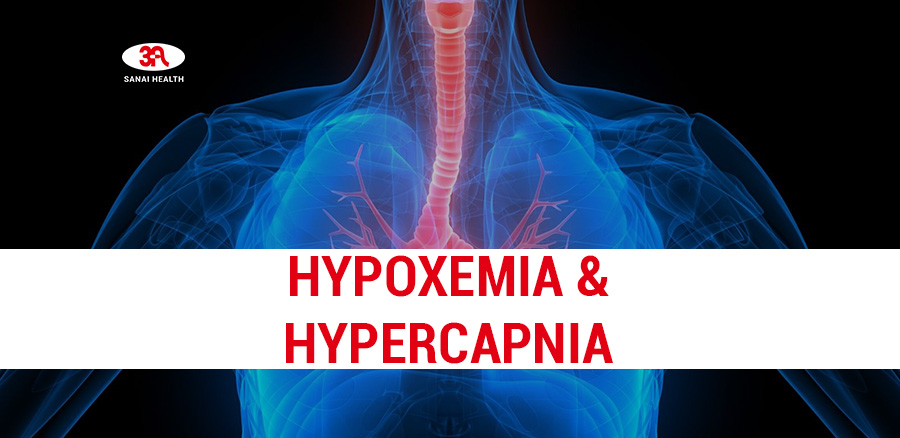Understanding Hypoxemia & Hypercapnia
What is Hypoxemia?
Reduction in the blood oxygen levels is called hypoxemia. The lowering the blood oxygen level can cause a number of symptoms. The occurrence of such a condition can be explained by a number of preexisting health problems like COPD, Asthma, Congestive Heart Failure, Cancer and Acute Respiratory Distress Syndrome.
The lungs are unable to inhale oxygen that is enough to sustain the body. The oxygen level falls below the normal. Oxygen therapy often times starts when the oxygen level in the blood (PaO2) falls below 55-60 mmHg or the saturation of oxygen in blood falls lower than 88 to 90%.
What is Hypercapnea?
Hypercapnea signifies an increase in the partial pressure of Carbon Dioxide in the blood. This discovery is made via testing Arterial Blood Gases (ABGs). The normal blood level of carbon dioxide is 40 PaO2. It is interesting to note that even the slightest increase (PCO2: >50 mmHg) in the carbon in blood can cause body to immediately increase breathing rate.
This condition is usually initiated by the inability of the lungs to properly clear out the carbon dioxide from the blood. This situation can arise because of several pulmonary conditions. When the condition turns chronic, the body is unable to create the perfect balance. The condition can progress into Acidosis because of the lowered blood pH. Once the body has acidosis, kidneys start producing HCO3 in order to reduce the acidity of the blood. Hypercapnea is strongly associated with increased chances of death in the intensive care unit.
However, the condition can get out of hand and that would lead to oxygen therapy. The treatment decisions are made based on the symptoms and other factors as noted by the physicians.
Symptoms of Hypoxemia & Hypercapnea can Look Like This
Hypoxemia can present in a number of ways. A physician can always identify the decline in pulmonary health of the patient. Hypoxemia is an important condition whose early detection helps save the patients from invasive care options. Clinically, hypoxemia can present as:
- Increase in the respiratory rate- tachypnea.
- Spike in the heart rate, termed tachycardia.
- Sudden increase in sweating- diaphoresis.
- Increasing blood pressure- hypertension.
These conditions will further be pronounced by the use of accessory muscles for breathing. The patient pulls in their stomach during inspiration. This action during inspiration means that the patient is now dependent on muscles including the diaphragm for the purpose of breathing. Now the patient will have the following symptoms:
- The respiratory rate decreases as the breathing becomes erratic.
- The breathing ceases.
Respiratory failure occurs as the lungs fail to meet the oxygen needs of the patient. The carbon level increase is a disaster on its own for different body organs.
On the other hand there are several neurological symptoms as well. They include:
- Anxiety
- Delirium
- Agitation
- Confusion
- Visual changes
- Hypervigilance
- Somnolence
- Seizures
- Headache
- Coma
Doctors will also note that multiple organs will start to deteriorate, including:
- Kidney
- Brain
- Liver
- Heart
To find out the definitive cause of the condition, one needs to get a battery of tests done that include imaging of the chest area.
Health Conditions That Can Cause Hypoxemia and Hypercapnea
Management of Hypoxemia and Hypercapnea
The management of both conditions need cautious treatment from alert medical staff.
Hypoxemia Treatment with Supplemental Oxygen Therapy
The patient with falling oxygen levels get oxygen therapy via the use of oxygen tank or oxygen concentrators. The patient will receive oxygen from anywhere around 0.5 LPM to 6 LPM. The nasal cannulas provide adequate amount of oxygen to the patient.
The level of oxygen given to the patient is also decided based on the respiratory rate of the patient. A patient with shallow breathing will be unable to get adequate amount of oxygen from a 0.5 LPM flow from the oxygen concentrator and so they’d best receive more oxygen per liter.
Care for Hypercapnea Sensitive Patients
When the oxygen levels go up, there is a possibility that patients can start retaining even more carbon dioxide to help keep the balance. With a number of health conditions that increase the body’s level of carbon, it is necessary to know options that will help clear out the excess.
Invasive ventilation is the main treatment option. There are a number of settings on the mechanical invasive ventilation that help in reducing carbon dioxide. The physicians can increase the PEEP to help improve the clearance of carbon dioxide. Another method is increasing ventilation per minute for the patient. Increasing the ventilation per minute however comes with its own issues like stress on the right ventricle and dynamic hyperinflation.
The main concern is making sure that the invasive mechanical ventilation is changed as per the patient’s needs. Consequently the patient should be able to clear out the carbon from their blood stream.
Oxygen and Carbon Control with Oxygen Concentrators in Emergency
Oxygen concentrators are great for normalizing patient oxygen levels in the emergency room. The level of control granted through the oxygen concentrator is better, the doctor can monitor the patient’s oxygen levels via the pulse oximeter easily throughout. The blood ABGs are another part of the assessment that help the doctors further make decisions pertaining to oxygen administration via the oxygen cylinder or medical oxygen concentrator.

